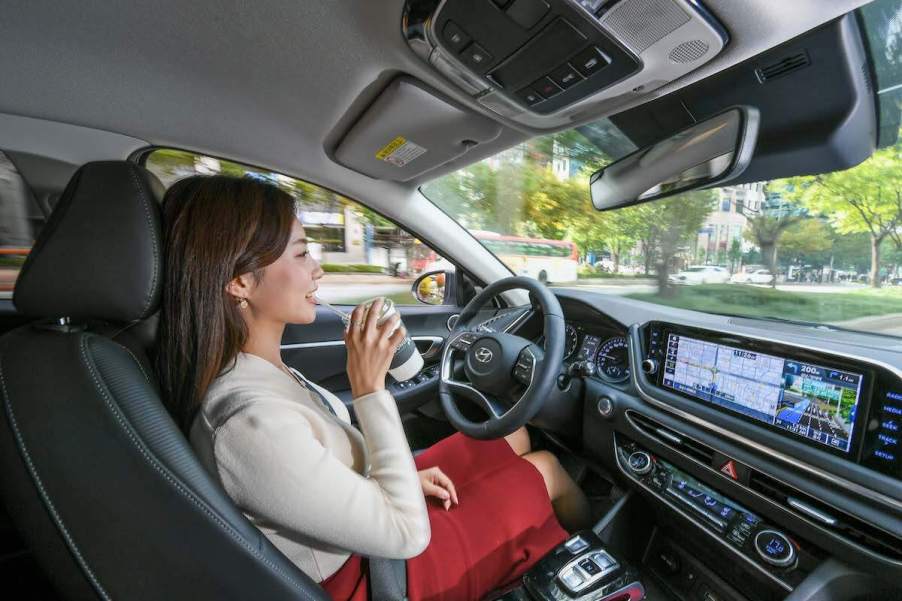
Hyundai Made Crucial Changes to 1 Driver’s Aid After Poor Reviews
Automakers continually upgrade car safety features to protect occupants and improve the driving experience. For example, Hyundai launched Highway Driving Assist 2 (HDA 2) to address issues and complaints with the original HDA. Hyundai driver’s aids typically garner positive reviews. However, critics weren’t fond of HDA.
So, what was wrong with Hyundai Highway Driving Assist, and what can you expect with Highway Driving Assist 2? Learn more about these advanced driver-assistance systems, including what’s new with HDA 2.
What is Hyundai Highway Driving Assist, and how does it work?

Active driving assistance (ADA) systems are more common in new vehicles. Industry experts test and rate these driver’s aids, sharing problems and praise accordingly. Hyundai’s driver’s aids are typically well received, but Highway Driving Assist earned criticism.
Hyundai designed HDA for limited-access highways and combines stop-and-go capabilities with adaptive cruise control. The safety feature can help with lane centering and uses GPS technology to help reduce driver fatigue. The company made the system available in Hyundai, Kia, and Genesis vehicles, including the Hyundai Sonata, Kia K5, and Genesis GV70.
Highway Driving Assist is one Hyundai driver’s aid that didn’t do the brand any favors among critics. Indeed, Consumer Reports gave it the lowest score of all ADA systems it tested. Though HDA earned an above-average rating for user-friendliness, it tanked across the board elsewhere, including the following categories:
- Keeping the driver engaged
- Unresponsive driver
- Clear when safe to use
How is Hyundai Highway Driving Assist 2 better than the original HDA?
Hyundai listened and introduced the next-generation Highway Driving Assist 2 in 2021 Genesis models and other vehicles in April 2023. Some models have this updated version, while other 2023 models are still equipped with the original ADA. Highway Driving Assist 2 brings more semiautonomous driving features, including lane-changing assistance and machine-learning capabilities to offer a more intuitive, adaptive stop-and-go cruise control.
Highway Driving Assist 2 uses a forward-facing radar and cameras. It also harnesses the navigation map and GPS technology. Together, these Hyundai safety features improve driver confidence and provide a sound experience at highway speeds. HDA 2-equipped vehicles help drivers auto-correct in their lane and adjust driving speeds based on their proximity to other cars.
What are the automaker’s other advanced driver-assistance systems?
Like other major automakers, Hyundai takes car safety seriously and continually adds more driver’s aids. For example, Hyundai SmartSense technology uses cameras, radar, and sonar to improve driving and parking dynamics. Forward collision avoidance, blind-spot collision avoidance assist, rear cross-traffic collision avoidance assist, rear occupant alert, and blind-spot view monitoring are a few of the innovative safety systems in SmartSense.
In addition, Hyundai offers Remote Smart Parking Assist (RSPA) and Vehicle-to-Load (V2L). The V2L port allows users to charge high-power electrical equipment using the vehicle’s battery. And Remote Smart Parking Assist allows drivers to stand outside their Hyundai vehicle and use smart key buttons to move the car in and out of tight parking spaces.
Hyundai Highway Driving Assist 2 is a welcomed improvement to HDA. And introducing this next-gen version, along with the availability of all the other driver’s aids, demonstrates the company’s commitment to improving consumer safety and the driving experience.




